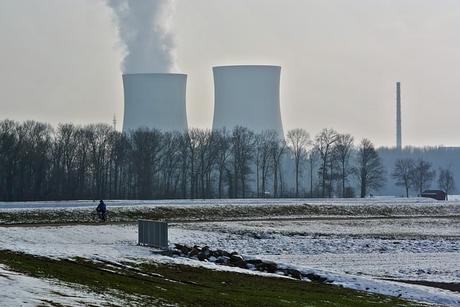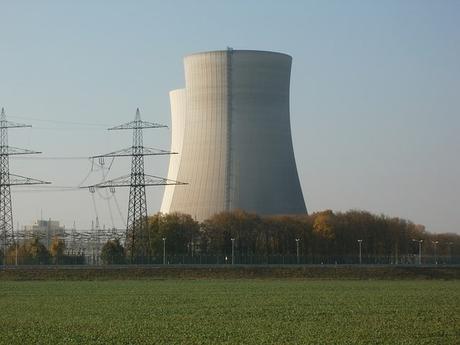Radioactive pollution occurs when there is presence or depositions of radioactive materials in the atmosphere or environment, especially where their presence is accidental and when it presents an environmental threat due to radioactive decay. The destruction caused by the radioactive materials is because of the emissions of hazardous ionizing radiation (radioactive decay) like beta or alpha particles, gamma rays or neurons in the environment where they exist.
Since the substances are characterized by radiation – because there is a lot of instability of the particles present in the radioactive materials, it can seriously affect, alter and even destroy plant, animal, and human life. The extent of damage or danger posed to the environment depends upon the radioactive material concentration, the energy emitted by the radiation, proximity of the radioactive materials to those exposes, and the radiation type. Herein is a detailed explanation of the causes, effects, and solutions of radioactive pollution.

Causes of Radioactive Pollution
1. Nuclear accidents from nuclear energy generation plants
In the postmodern world, various forms of energy are being discovered. Among them is nuclear energy, which is touted to be the most potent source of energy due to its high latent power. Reports indicate that the high latent power is due to its high level of radiation.
Its use is, therefore, prohibited but research is underway to determine its environmental safety and to put in place the most appropriate precautionary measures for its use. In some cases and countries, however, nuclear power plant accidents like the Fukushima Daiichi nuclear disaster, Chernobyl disaster, and Three Mile Island accident that left many dead and even many more affected by the radiation released.
2. The use of nuclear weapons as weapons of mass destruction (WMD)
The use of nuclear missiles and atomic bombs, a form of nuclear energy, in the Second World War not only explains cause but also the damaging nature of radioactive pollution or contamination. The effects of those two strikes in Hiroshima and Nagasaki that prompted the end of the war in 1945 have been seen to date with children born with complications such mental retardation as well as conditions such as autism and other disorders. The number of cancer cases present in the two towns is more than those of the rest of Japan.
3. Use of radio isotopes
Radio isotopes are used to make detectors and in other industrial activities. Isotopes such as uranium have high concentrations of radiation in them. On the other hand, common Isotopes such as carbon containing radioactive material are easily found in water ways through sewage lines.
Since most of the raw sewage is untreated before release, once released, the isotope combines with other compounds and elements in water. This is the same water that people fetch for domestic use. Moreover, fishes use the same water to survive. Consumption of these fish and from contaminated water sources means potential intake of radiation.
4. Mining
Mining mostly involves the excavation of the mineral ores which are then broken into smaller manageable pieces. Radium and Uranium, for instance, are naturally occurring in the environment and are equally radioactive. Hence, mining increases the natural geological processes by moving these materials from underneath the earth to the surface. Other minerals with a hint of radiation are thorium, plutonium, radon, potassium, carbon and phosphorus.
5. Spillage of radioactive chemicals
There have been instances of spillages over oceans when ships hit glaciers or coral reefs and end up releasing chemicals on waterways and in the atmosphere. The majority of these chemicals including petroleum products have a significant level of radiation which can be detrimental to the environment.
6. Tests on radiation
Radiation has been seen to have a lot of interesting properties which has promoted a lot of scientists to conduct tests to learn more about it. It is one of the key elements in the cure and treatment of cancer.
Chemotherapy, a cancer curative health initiative uses radiation to prevent further growth of the cancer cells as well as keep the immune system strong. Despite this, scientists have been exposed to radiation leading to their deaths or to complications.
7. Cosmic rays
These come from outer space to our planet with intense radiation as their nature, therefore, causing radioactive pollution. Gamma rays, for example, are said to have the highest level of radiation and yet, depending on their intensity, some are not visible to the human eye. The quantity with which the rays hit the earth depends on the altitude of the earth and the geographical location.
Effects of Radioactive Pollution
1. Genetic mutations
Radiation has adverse effects when it comes to genetics. It leads to damage of DNA strands leading to genetic break up in the course of time. The degree of genetic mutation leading to changes in DNA composition vary due to the level of radiation one has been exposed to and the kind of exposure.
In the event that a human or an animal is exposed to too much radiation from the atmosphere, food consumed and even water used then chances are that their bodies have already absorbed the radiation. Once in the body, it remains active because energy cannot be destroyed.
The resulting mutation makes one highly susceptible to cancer. For pregnant women, kids born have adverse defects caused by genetic mutations like low weight during birth. Effects such as disfigured births and impairment like blindness in children have also been reported. Infertility has also been mentioned as an effect of radiation.
2. Diseases
Cancer is the most dominant radiation related disease. It has developed over the years and poses great risk in global health. Others include leukemia, anemia, hemorrhage, a reduction in the life span leading to premature aging and premature deaths as well as others such as cardiovascular complications. Leukemia, for instance, is caused by radiation in the bone marrow.
3. Soil infertility
Exposure of radiation to the atmosphere means it is present even in soils. Radioactive substances in the soil react together with the various nutrients leading to destruction of those nutrients, thus rendering the soil infertile and highly toxic. Such soil leads to the harvest of crops that are riddled with radiation and thus, unfit for consumption by both humans and animals.
Plants that grow from such soil are also genetically modified. Since these are at the base of the food chain, the herbivores consume them and retain the radiation levels. The carnivores such as lions, vultures end up consuming them and increasing their levels of radiation – explained through the concept of Biomagnification.

4. Cell destruction
Radioactive pollution has diverse effects such as the alteration of cells. The bodies of living organisms are unique in that there are millions of cells in one single body, where each has its purpose to fulfill. Radiation distorts the cells present leading to permanent damage of the various organs and organ systems. In the face of too much radiation, permanent illnesses and death are inevitable.
5. Burns
Radiation is not easy to feel but it is easy to realize that you have been affected by it. The immediate presence of burns, red lesions and sores is evidence. To make it worse, this can lead to skin cancer.
Solutions of Radioactive Pollution
1. Proper method of disposing radioactive waste
Radioactive waste still has some level of radiation. Accordingly, it cannot be disposed in the same way as normal waste. It cannot be incinerated or buried. Since there is likelihood of seepage, this waste should be stored in heavy and thick concrete containers. Another option is to dilute the radiation since storage may not be possible. Since there are no easy ways of disposing of radioactive material, professional assistance should always be sought.
2. Proper labeling
It is necessary for any material with radioactive content to be labeled and the necessary precautions advised on the content of the label. The reason for this is because radiation can enter the body by a mere touch of radioactive material. Containers with such elements should be well labeled in order for one to use protective gear when handling them.
3. Banning of nuclear tests
It has already been proven that nuclear power has a lot of latent power that is very destructive. Nevertheless, the tests done to perfect the energy contribute greatly to the overall presence of radioactive substances. Moreover, these tests though done in the deserts end up escaping from one ecosystem to another eventually affecting the lives of many people.
4. Alternative energy sources
The evolution and use of nuclear power was not a bad thing initially. However, considering the damage and threats it has on the environment, it is high time for its use to be discontinued and for the world to perhaps focus on alternative and environmentally friendly energy sources – like renewable sources of energy namely Solar, hydro-electric and wind power.
The use of radioactivity to generate energy in nuclear power plants, for example, leads to the production of more radiation to the atmosphere considering the waste released from the various processes and combustion.
5. Proper storage
It is mandatory for containers carrying radioactive material to be stored properly. For starters, such substances should be stored in radiation proof containers to ensure no seeping or leakage during handling. Proper storage means no harm and can minimize cases of accidental leakage.
6. Reusing
Since it is not easy to store or dispose the waste, it can be recycled and used for other purposes like in another reactor as fuel thereby protecting the environment.

